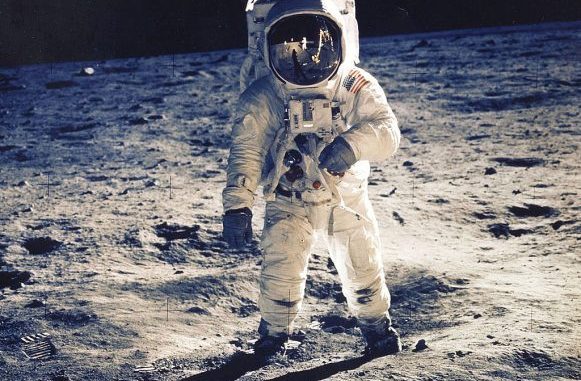

30Th Anniversary Of Apollo 11 Landing On The Moon (9 Of 20): Astronaut Edwin E. Aldrin Jr., Lunar Module Pilot, Is Photographed Walking Near The Lunar Module During The Apollo 11 Extravehicular Activity. (Photo By Nasa/Getty Images)
OAN Newsroom
UPDATED 3:34 PM PT – Sunday, November 29, 2020
NASA is beginning to prepare the launch system for the ‘Artemis’ moon mission next year.
On Tuesday, NASA announced the start of assembly for the rocket, which will be used to take the first woman to the moon. The launch is scheduled for 2021.
The first booster engine was completed at the Kennedy Space Center in Florida to prepare for the ‘Artemis’ program’s unmanned maiden voyage.
Space news, delivered!
Join us for weekly updates on our #Artemis Moon program! Plus discover the latest on Earth, the Solar System and beyond — all delivered right to your inbox. https://t.co/MyG37QzGhO pic.twitter.com/rE43dO4okH
— NASA (@NASA) November 29, 2020
The trip will act as a test run for the technology slated to be apart of the manned ‘Artemis’ rocket.
“So the Artemis program is our lunar exploration program,” said astronaut Serena Auñón-Chancellor. “We will get to the south pole of the moon by 2024, landing the first woman and the next man.”
It’s the first of 10 test run engines to be assembled as part of the new space launch system, which NASA hopes can be used for future trips to Mars and other deep-space missions.
In 2021, officials are expected to make an unmanned test flight around the moon before the second mission in 2023. This is all in preparation for the final mission, ‘Artemis three,’ which will make the lunar landing in 2024.
Since 1969, the U.S. has only made six trips crewed to the moon. The last one took place in 1972.
In 2019, NASA Administrator Jim Bridenstine said the agency will use the next trip to gauge their ability to sustainably travel and stay on the moon.
“We are going to take the lead, and we’re going to take a coalition of nations, to go to the moon, this time to stay,” Bridenstine said. “That is a significant difference between what we’re doing today, and what we did back in 1969 to 1972.”







Be the first to comment